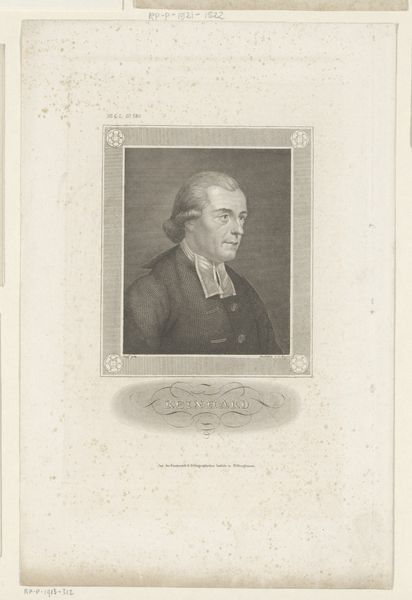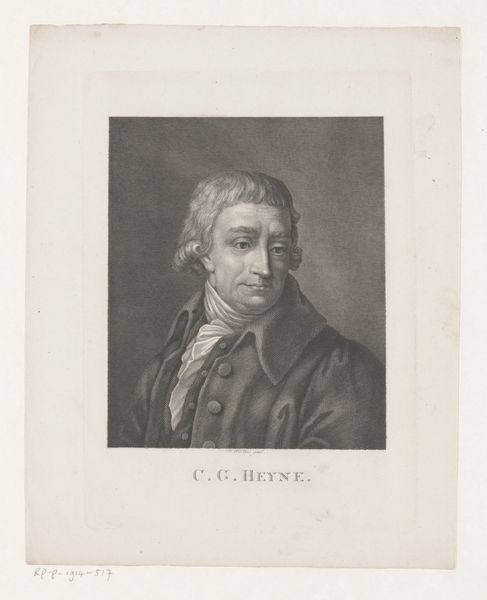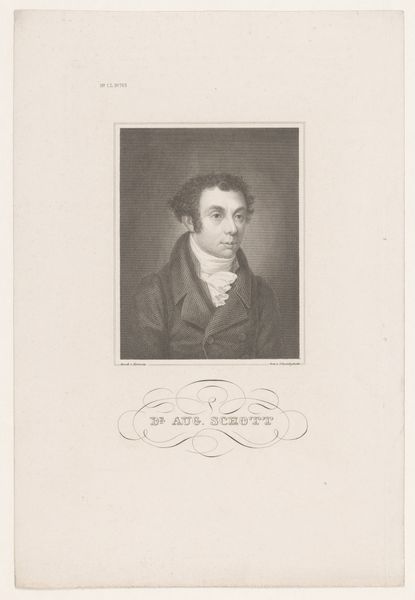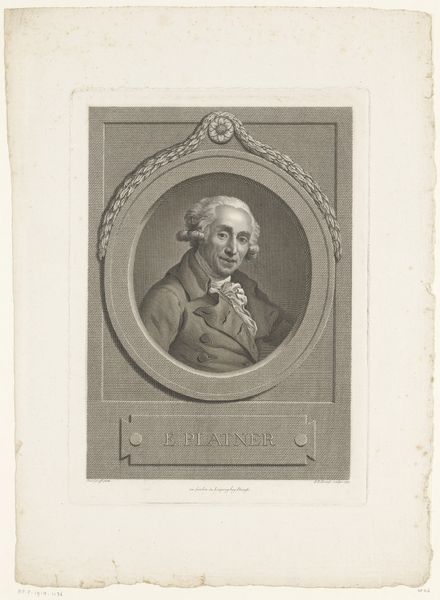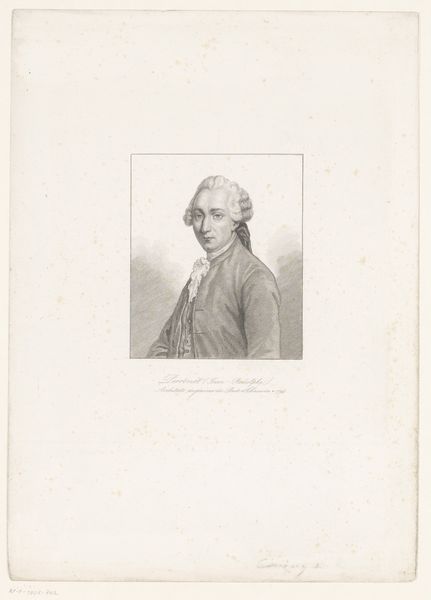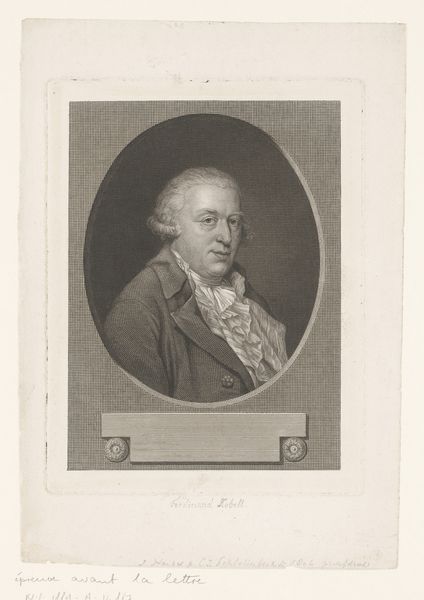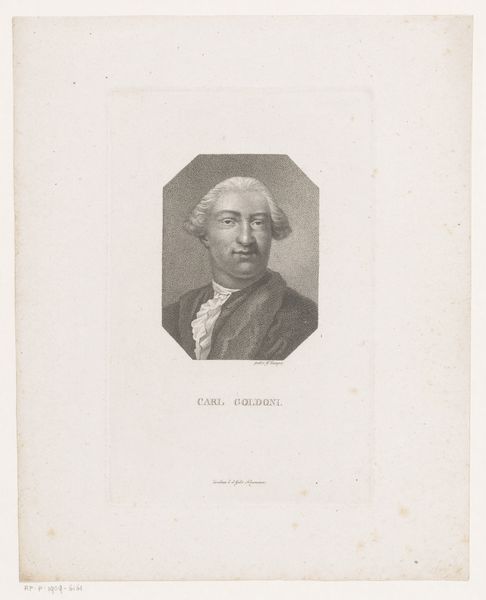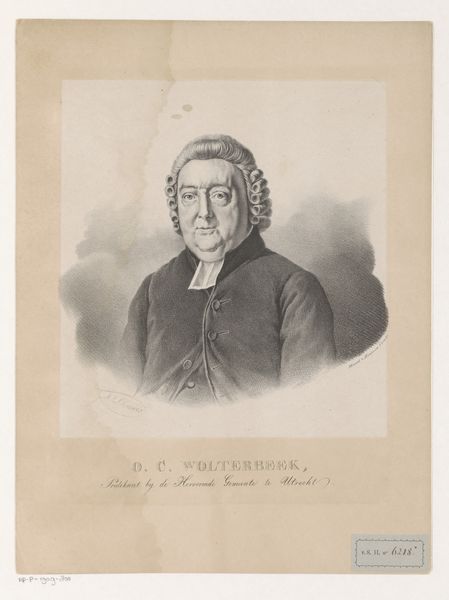
print, paper, graphite, engraving
#
portrait
#
neoclacissism
# print
#
paper
#
line
#
graphite
#
engraving
Dimensions: height 272 mm, width 203 mm
Copyright: Rijks Museum: Open Domain
Curator: Let's turn our attention to "Portret van Johann Heinrich Rahn" by Johann Heinrich Lips. The piece dates between 1768 and 1817 and utilizes engraving with graphite on paper. What are your initial impressions? Editor: Stark. It has a somewhat severe but undeniably direct feel. The sharp lines and monochromatic palette create a formal mood. The eyes draw you in. Curator: Absolutely. Consider the printmaking process here: the artist, Lips, would have meticulously cut into a metal plate. Think about the level of skill and labor required to produce this likeness. The marks he makes are themselves imbued with the cultural labor necessary for this print production. Editor: That's an important point. Knowing that it is a print immediately raises questions about access, dissemination, and, of course, social status. Whose image gets reproduced and circulated? I'm wondering what Rahn’s role was, given the date places him squarely within revolutionary discourse, and who might have purchased this print and why. Curator: Indeed, such considerations illuminate its cultural significance. Lips, though lesser known, clearly engages with the Neoclassical style. See how the artist captures this man, and uses a limited palate to direct attention. Editor: Neoclassicism favored reason, order, and clarity. This is definitely visible in the carefully modeled face and controlled composition. We can't overlook the sitter’s class and gender—a white male citizen—as factors in its appeal at the time, which makes this a commentary about who has access to visibility in culture. The production and distribution of this portrait affirms and solidifies existing hierarchies. Curator: True. The paper itself, handmade perhaps, tells a story of production— where does it come from? How widely available was it? Every element speaks to a broader economic and social landscape. Editor: It reminds us that portraiture isn't just about individual likeness; it is always about power and how that power is materially represented and circulated. It also hints about class status based on materials used, the luxury or scarcity of print during the era, and those that the portrait represents. Curator: Examining the labor and resources involved truly deepens our engagement with this compelling piece. Editor: For sure. Thinking critically about its historical and social context sheds light on the systems it upholds.
Comments
No comments
Be the first to comment and join the conversation on the ultimate creative platform.
